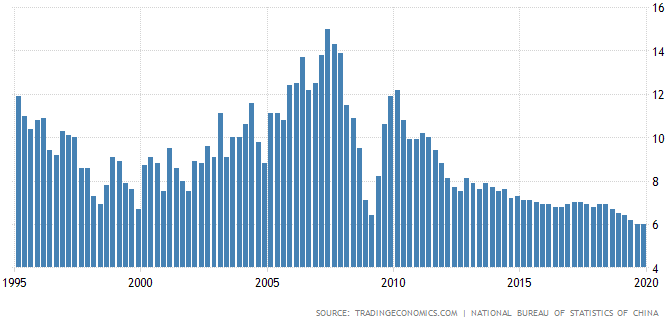A 23rd February blog post by Sven Henrich hits a couple of nails on the head. Here’s an excerpt:
“…the virus…clearly has a short term effect, but rather the broader risk is the excess created by ultra-loose monetary policies that has pushed investors recklessly into asset prices at high valuations while leaving central bankers short of ammunition to deal with a real crisis. There was no real crisis last year, a slowdown yes, but central bankers weren’t even willing to risk that, instead they went all in on the slowdown. It is this lack of backbone and co-dependency on markets that has left the world with less stimulus options for when they may be really needed. Reckless.”
Yes, central banks present a vastly greater threat to the economy than the coronavirus. Unfortunately, however, there never will be a vaccine that could immunise the economy from the effects of interest rate manipulation. Also, Sven is wrong when he writes that central bankers are short of ammunition and when he implies that stimulus options of the central planning kind will be needed at some point in the future. These options are always counter-productive and therefore never needed.
Central banks are a long way from being short of ammunition, because there effectively is no limit to the amount of money they can create. They can monetise (purchase with money created out of nothing) pretty much anything. At the moment they generally have restricted themselves to the monetisation of their own government’s debt, but they could expand their bond-buying to encompass investment-grade corporate debt and, if that wasn’t deemed sufficient, high-yield (junk) debt. They also could monetise equities, perhaps beginning with ETFs and working their way down to individual stocks. If they wanted, with a change of some arbitrary rules they could even monetise commercial and residential real estate.
It could be argued that “inflation” (in the popular sense the word: an increase in the so-called general price level) limits the amount of new money that central banks can create, in that after “inflation” starts being perceived as a major threat the central bank will come under irresistible political pressure to tighten the monetary reins. This is one of the tenets of the idiocy known as Modern Monetary Theory, or MMT for short. According to MMT, the government should be able to create out of thin air whatever money it needs, with the “inflation” rate being the only limitation. However, in some developed countries, including the US, many people already are having trouble making ends meet due to the rising cost of living, and yet the central bank claims that the “inflation” rate is too low and senior politicians agree.
As well as distorting price signals and thus getting in the way of economic progress, when the central bank makes long-term additions to its balance sheet it is, in effect, surreptitiously nationalising part of the economy. For example, the Bank of Japan (BOJ) already has nationalised Japan’s government bond market and is well on its way towards nationalising the market for ETFs (the BOJ owns about 80% of all ETF shares listed in Japan).
The creeping nationalisation of markets is something that is rarely, if ever, mentioned during discussions of current and potential monetary stimulus, but it’s a big problem that looks set to get even bigger.
 Print This Post
Print This Post

